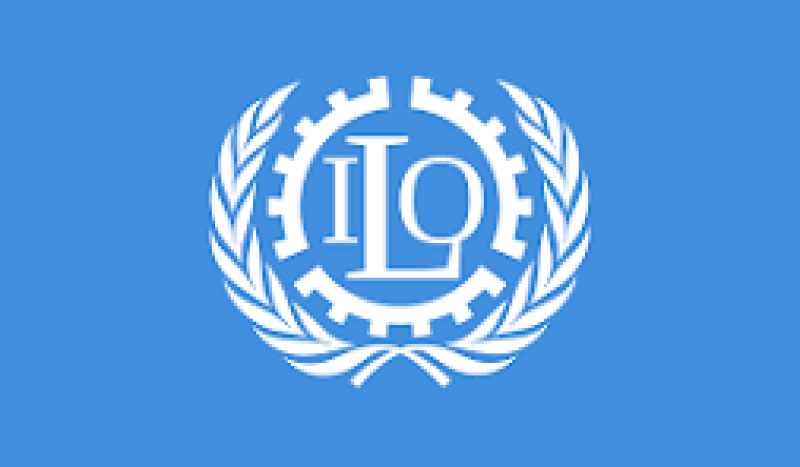- Heat wave, drought threaten litchi production in Pabna |
- British officials charge 2 with spying for China |
- Teen truck driver takes 3 lives in Bagerhat |
- Heat wave turns very severe in Rajshahi, Chuadanga, Pabna |
- US universities rocked by pro-Palestinian protests |
Annual profits from forced labour $236 billion: ILO report

ILO logo, Wikipedia
"International community must urgently come together to take action to end this injustice, safeguard workers' rights"
Dhaka, Mar 19 – Forced labour in the private economy generates US$236 billion in illegal profits per year, a new report from the International Labour Organization (ILO) has found.
The total amount of illegal profits from forced labour has risen by US$64 billion (37 per cent) since 2014, a dramatic increase that has been fuelled by both a growth in the number of people forced into labour, as well as higher profits generated from the exploitation of victims.
The ILO report, Profits and Poverty: the economics of forced labour, estimates that traffickers and criminals are generating close to US$10,000 per victim, up from US$8,269 (adjusted for inflation) a decade ago.
Total annual illegal profits from forced labour are highest in Europe and Central Asia (US$84 billion), followed by Asia and the Pacific (US$62 billion), the Americas (US$52 billion), Africa (US$20 billion), and the Arab States (US$18 billion).
When illegal profits are expressed per victim, annual illegal profits are highest in Europe and Central Asia, followed by the Arab States, the Americas, Africa and Asia and the Pacific.
Forced commercial sexual exploitation accounts for more than two-thirds (73 per cent) of the total illegal profits, despite accounting for only 27 per cent of the total number of victims in privately imposed labour.
These numbers are explained by the huge difference in per victim profits between forced commercial sexual exploitation and other forms of non-state forced labour exploitation – US$27,252 profits per victim for the former against US$3,687 profits per victim for the latter.
After forced commercial sexual exploitation, the sector with the highest annual illegal profits from forced labour is industry, at US$35 billion, followed by services (US$20.8 billion), agriculture (US$5.0 billion), and domestic work (US$2.6 billion).
These illegal profits are the wages that rightfully belong in the pockets of workers but instead remain in the hands of their exploiters, as a result of their coercive practices.
There were 27.6 million people engaged in forced labour on any given day in 2021.
This figure translates to 3.5 people for every thousand people in the world. Between 2016 and 2021 the number of people in forced labour increased by 2.7 million.
“People in forced labour are subject to multiple forms of coercion, the deliberate and systematic withholding of wages being amongst the most common. Forced labour perpetuates cycles of poverty and exploitation and strikes at the heart of human dignity. We now know that the situation has only got worse. The international community must urgently come together to take action to end this injustice, safeguard workers' rights, and uphold the principles of fairness and equality for all,” stated ILO Director-General, Gilbert F. Houngbo.
The report stresses the urgent need for investment in enforcement measures to stem illegal profit flows and hold perpetrators accountable.
It recommends strengthening legal frameworks, providing training for enforcement officials extending labour inspection into high-risk sectors, and better coordination between labour and criminal law enforcement.
Yet forced labour cannot be ended through law enforcement measures alone, enforcement actions must be part of a comprehensive approach that prioritizes addressing root causes and safeguarding victims, underlines the report released from Geneva.
The Protocol of 2014 to the Forced Labour Convention, 1930, and the Forced Labour (Supplementary Measures) Recommendation, 2014 (No. 203) provide a strategic framework for comprehensive action. - UNB

